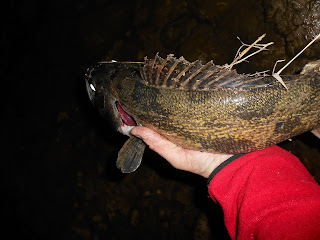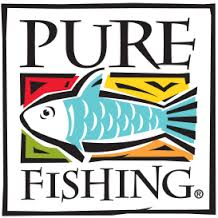Be like a rock in the middle of a river, let all of the water flow around and past you. – Zen Saying
Okay so have you turned on the TV and seen Jimmy Houston or Kevin VanDam or Hank Parker or any other big name fisherman wading a stream? Probably not. Bass fishing on TV is done out of huge glitter covered boats with giant motors on the back. Which is okay by me. There are thousands of miles of great fishing on America's rivers that you couldn't even launch a bass boat on, much less run the motor on. Water that often is best fished by wading. Water that is often lightly or even underfished. Unfortunately watching bass fishing on TV teaches you how to rig a drop shot or read your electronics but it sure isn't any help to the guy who has never waded before. And yes, you need to know a few things to effectively and safely wade rivers and streams.
Successful anglers who prefer rivers realize early on that wading can be the very best way to catch fish, particularly on small to mid-size rivers and streams. Wading lets you work promising water thoroughly and from a variety of angles. Often wading is an even better tactic than fishing from a kayak or canoe. When floating a river you often get just a single cast or two to a spot before your gone downstream. I like to combine the two techniques when I can, using my kayak to travel swiftly from one promising location to the next, then getting out and fishing the water thoroughly on foot.
In summer wet wading is the most comfortable way to fish but waders often come in handy during early spring, late fall, and in winter. Lightweight breathable waders are the logical choice for most smallmouth fishermen. Neoprene waders are just too hot most of the year. You can always layer up with fleece under your lightweight waders. The convertible pants hikers and backpackers use (the kind with zip-off legs) are far and away the best choice for wading. They are made of nylon or similar materials and dry off in a hurry. Often they are dry by the time you get back to the truck and just aren't as heavy as jeans when wet. Around here at least you need long pants even in summer because of things like nettles. Let's face it the best fishing often doesn't have wide beat down trails. I prefer dark, natural-colored shirts, especially in clear water situations. I don't go so far as to wear camouflage though it certainly wouldn't hurt. If somebody ever decides to come out with an official Oldstinkyguy line of fishing apparel it's basically going to be dark colored fruit of loom t-shirts and Goodwill fleeces for the winter. Two things you have to have are a hat and polarized sunglasses. Your simply going to be a much better fisherman with them on. I don't care if it's a designer fashion statement or the baseball hat you wore in high school ten years ago, wear a hat. No headaches or eye strain from glare, no sunburn, you can see the water better, you can see the fish better, you will fish longer than the guy with no hat. Don't be that guy, wear a hat. Sometimes the stereotypes are there for a reason, there's a reason every photo you have ever seen of anyone that's a serious fisherman shows them wearing a hat and sunglasses. And if your going to fish a spot that requires you to wade a bit deep to reach you can stick an extra lure or two on your hat. Nothings worse than taking five minutes to wade into position and then have to wade right back out to root thru your pack because you just broke off.
No fish is worth dying for. I've seen a few that I thought came close in the heat of the moment but no fish is worth dying for. Wading is inherently dangerous. Even if you are Michael Phelps, currents and junk on the river bottom can be hazardous so all anglers need to know how to wade safely.
Here are a few things I've learned over the years. Take your time. Simple I know, his has broader implications than just that. It obviously includes going slow and taking your time while wading, but also encompasses taking the time to look over the river where your thinking of crossing. Study the water a moment and evaluate current conditions before you just blindly wade in and attempt to cross a stream. Pick a route first. Slow and controlled are the keys to staying dry and safe. As you do more and more wading "slow" will become less slow, but wading will always be slower than walking on the bank. Take one step and make sure that foot is securely planted before making the next step. That is far and away the biggest reason most unplanned baths happen while wading. Don't just take a step and then the next in swift water without checking your foot placement first.
Don't face directly downstream or up, face sideways to the current and looking just a bit upstream. If you square up too much to swift current it is much easier to get swept off your feet. If you have ever tried crossing somewhere that is iffy and decided to turn back you know that your chances are greatest of getting swept off your feet are right as you turn around to go back and are squared up to the current for a moment. I've gotten myself into spots by stupidity where it became obvious I couldn't turn back, that forging ahead was actually the lesser of two evils. (In other words do as I say not always as I do.)
Speaking of which you probably will eventually someday make a bad decision and get swept of your feet. It's not nearly as big a deal as it might seem most of the time. Your best bet is to flop over on your back and ride the riffle down feet first, The biggest danger to any wading accident is hitting your head and this guards against this. If being swept off your feet is going to result in your being swept into a dangerous situation of any kind you have no business wading there to begin with.
One of the best stretches of smallmouth fishing I know of requires first that you wade a fast run that is right at the limit of my ability to wade in most flows to get to it. I don't know how many times I've walked up to this crossing and took a deep breath and then slowly blew it back out and thought "Oh Lordy" before trying to cross. The key to crossing these kinds of places is finding yourself a nice long stout stick to help you wade. Take that stick and place it securely on the bottom, test it and then lean on it before moving a foot, Don't move your stick at the same time your moving one of your feet. Move each separately and always have two of the three planted at any one time. I would say you lower your chances of falling by at least half any time you use a stick. And in many cases you can cross places that would simply be impossible to do so without one.
When it comes to actual fishing and not just crossing the stream, often the best thing you can do is to not just go wading right in. I constantly see people standing where they should be fishing. Just because the best looking spot is thirty feet out doesn't mean you shouldn't fish the near water first. You can always still fish the far water but you can't "unwade" water you have just scared the fish out of. And if you can reach the spot out there from the bank stay on the bank. It seems to be a natural inclination to just wade in when we are wade fishing, I see it over and over again.
Come midsummer when the fishing is lousy in most lakes it's often just fine in a small stream or river. And few things are more enjoyable than spending a summer day knee deep in a small stream.
The wading, the being part of the natural world, seeing birds and deer and other wildlife, all of this combines with the fishing to make wade fishing special. Just remember that wade fishing is the complete opposite of blasting down the lake in a bass boat. Often the slower you go the greater the rewards.


















































